Silk sarees are more than just garments—they are heirlooms, symbols of tradition, and timeless fashion pieces. From Banarasi to Kanjeevaram, every silk saree carries elegance and cultural value. However, one common concern for every saree owner is how to wash silk saree at home without losing its shine and texture.
The delicate nature of silk often makes women rush to dry cleaners. But the truth is, with the right care, you can safely wash your silk saree at home. This guide will help you learn everything about washing silk saree at home, maintaining its softness, and avoiding common mistakes.
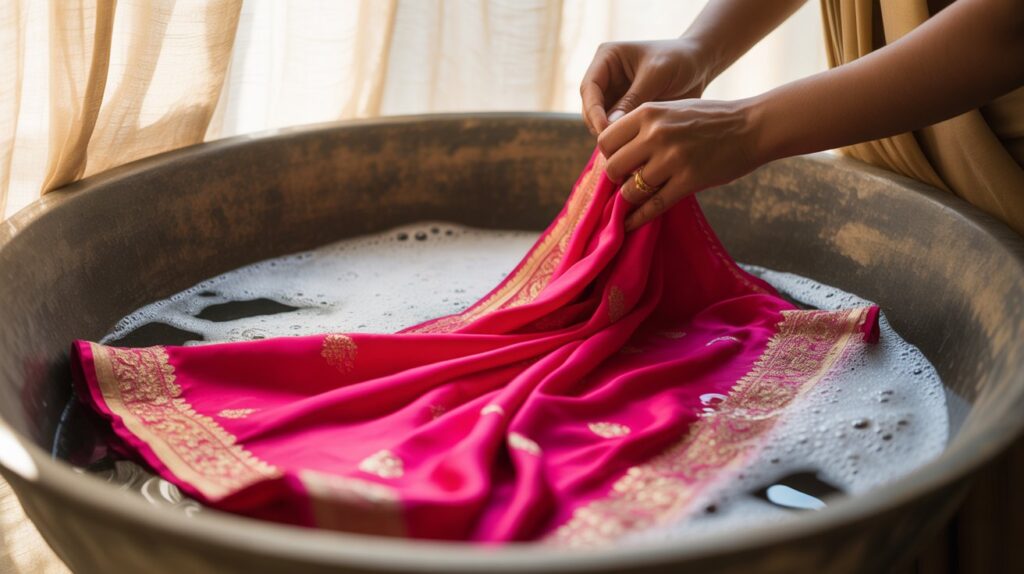
Why Silk Sarees Need Special Care?
Before learning how to wash silk saree at home, it’s important to understand why silk requires extra care.
- Delicate fibers – Silk is a natural protein fiber that can weaken when exposed to harsh detergents or scrubbing.
- Color bleeding – Dark-colored silk sarees often release dye when washed incorrectly.
- Shine maintenance – The natural sheen of silk can fade with rough handling.
- Long life – Proper care ensures your silk saree lasts for decades and can even be passed down generations.
This is why learning the right silk saree washing method at home is essential.
How to Wash Silk Saree at Home: Step-by-Step
Here is the safe and simple process to wash silk sarees at home without damaging their quality.
Step 1: Read the Saree Label
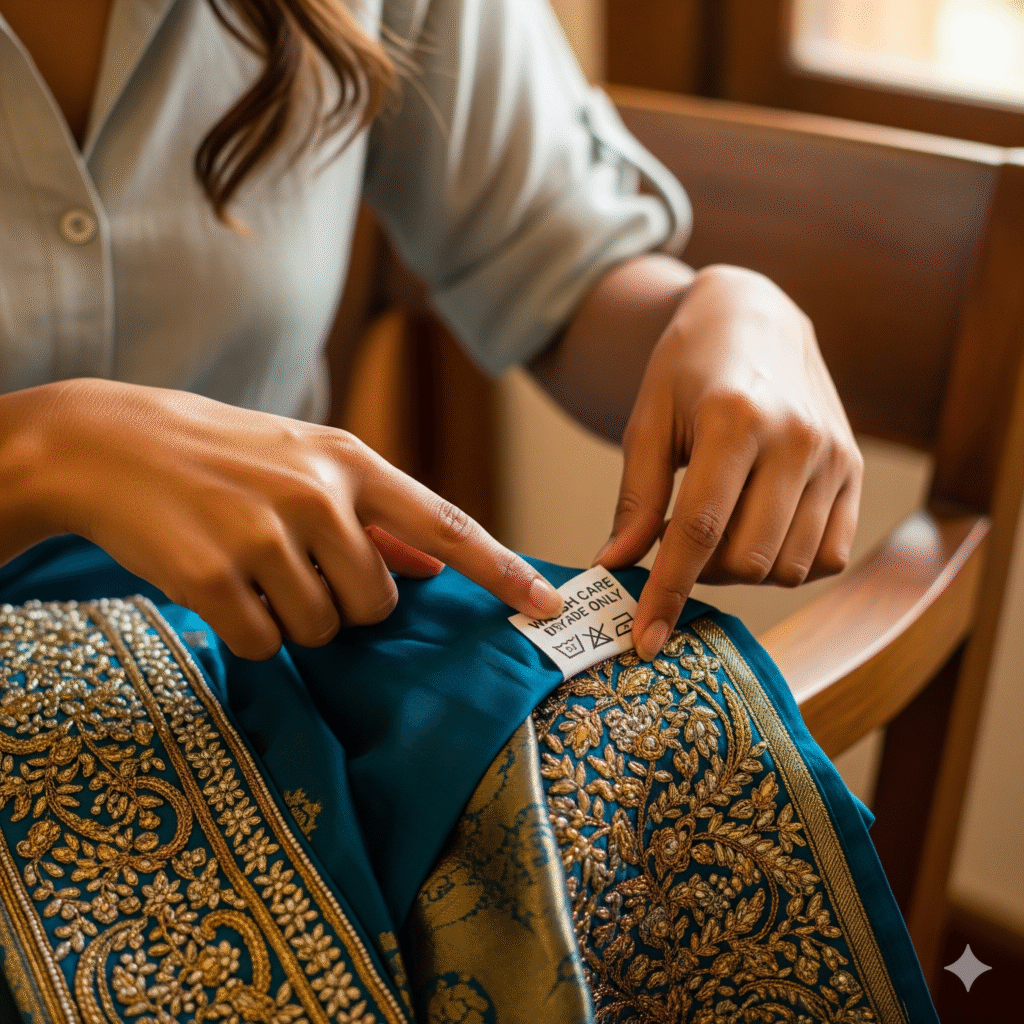
Check if your saree has a wash-care label. Some silks are “dry clean only,” while others can be hand washed. If in doubt, hand wash gently.
Step 2: Prepare a Mild Detergent Solution
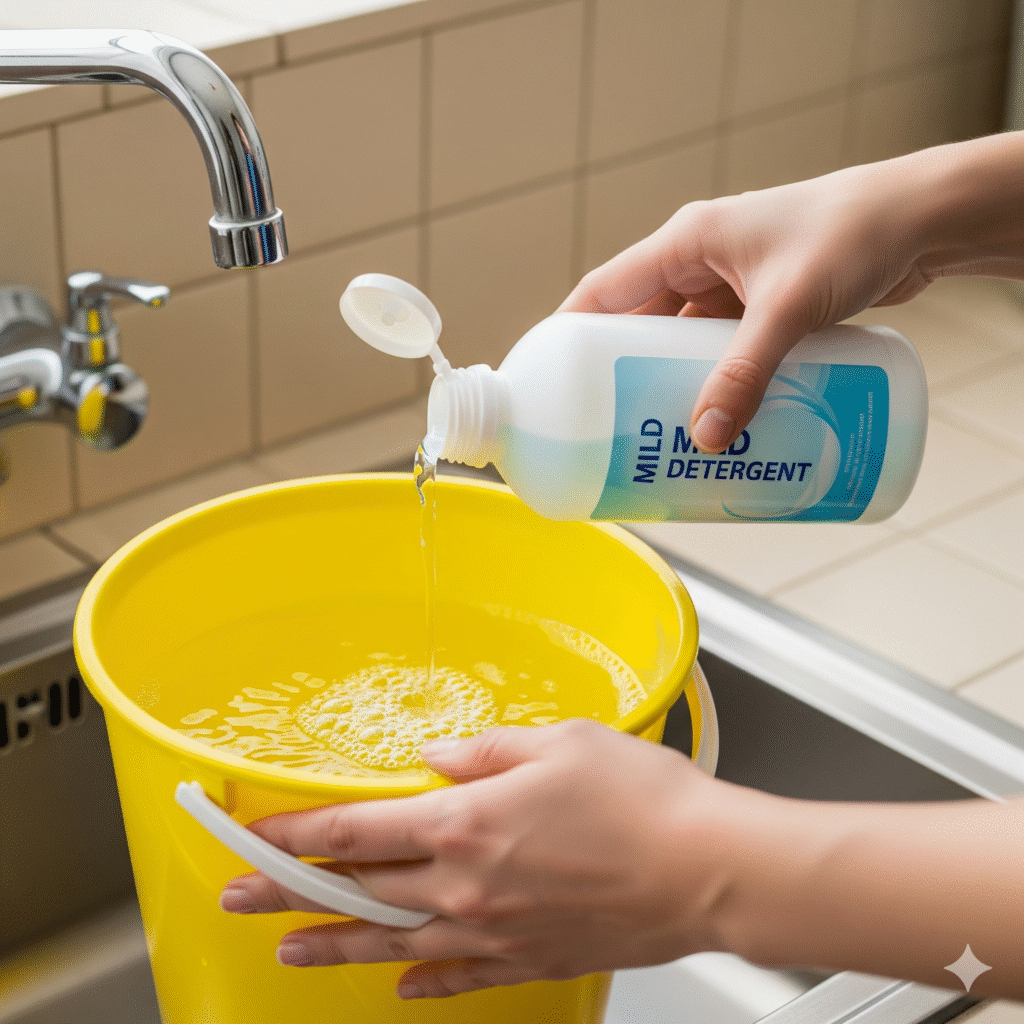
- Use cold or lukewarm water (never hot).
- Add 1 teaspoon of mild liquid detergent (baby shampoo, silk-safe detergent, or Ezee liquid).
- Mix gently until the solution is even.
Step 3: Soak the Saree
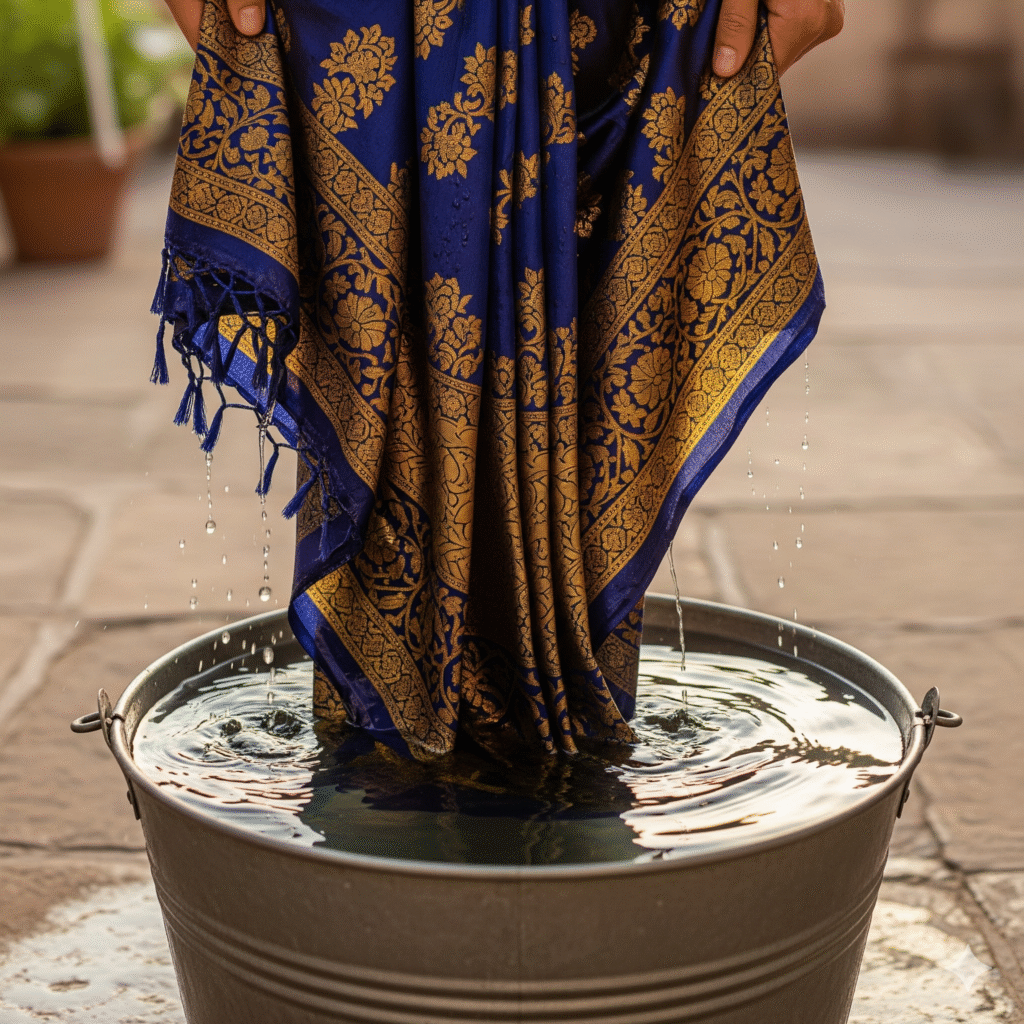
- Dip the silk saree in the solution.
- Soak for 3–5 minutes only (do not leave overnight).
- Avoid scrubbing or twisting.
Step 4: Gently Wash
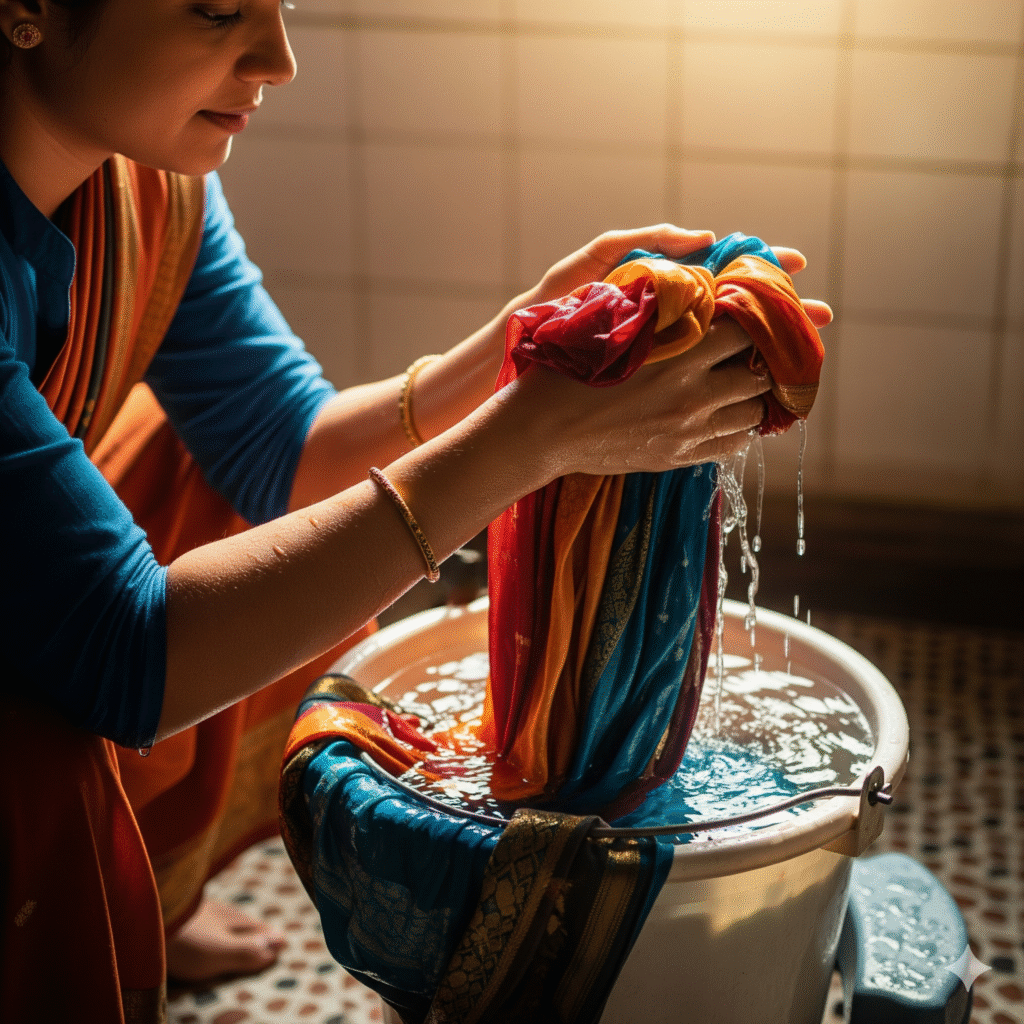
- Use your hands to lightly move the saree in the water.
- Focus on stained areas but never rub hard.
- For oil stains, use a few drops of lemon juice mixed with water.
Step 5: Rinse with Cold Water
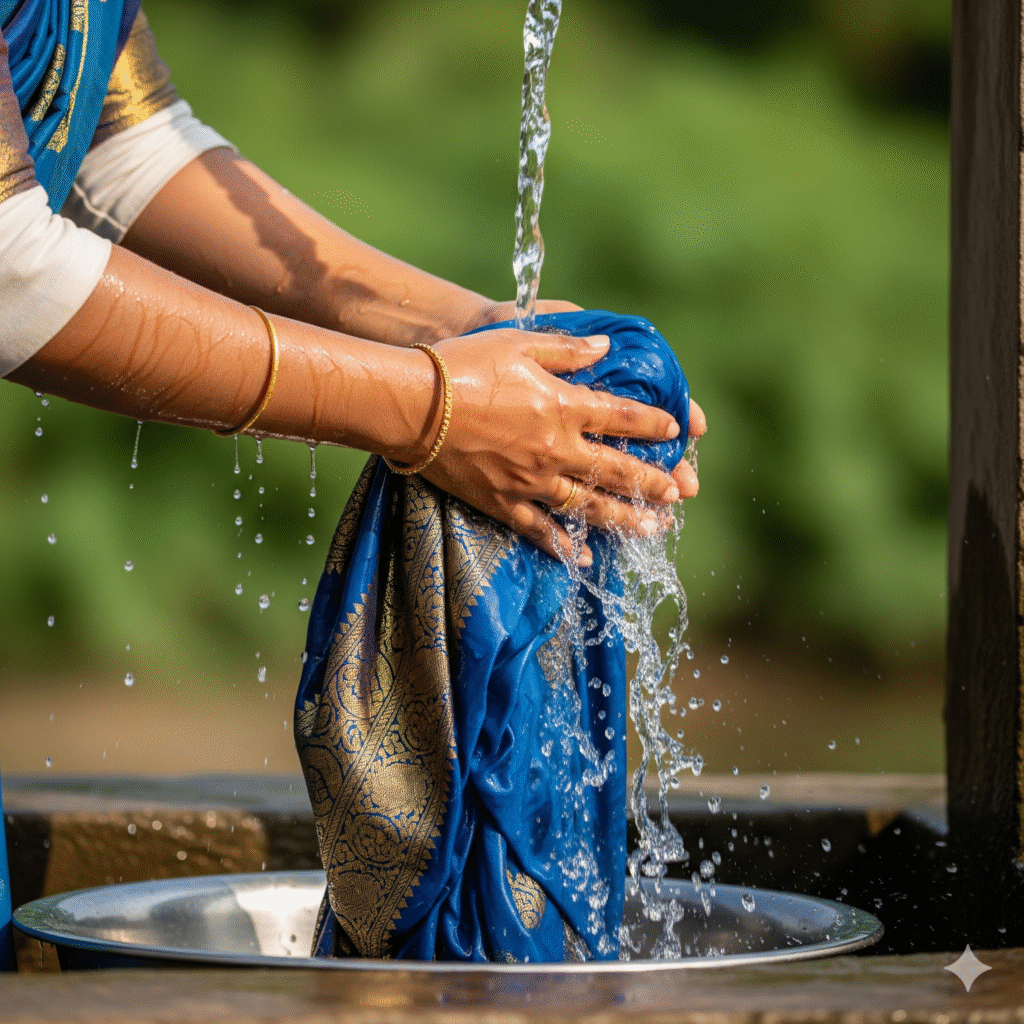
- Rinse thoroughly with clean cold water.
- Ensure no detergent residue remains.
- Do not wring or twist—just let water drip naturally.
Step 6: Use Vinegar for Shine (Optional)

- Mix 1 tablespoon of white vinegar in 1 liter of water.
- Give your saree a final rinse in this solution.
- It restores the saree’s natural shine and prevents fading.
Step 7: Dry Carefully
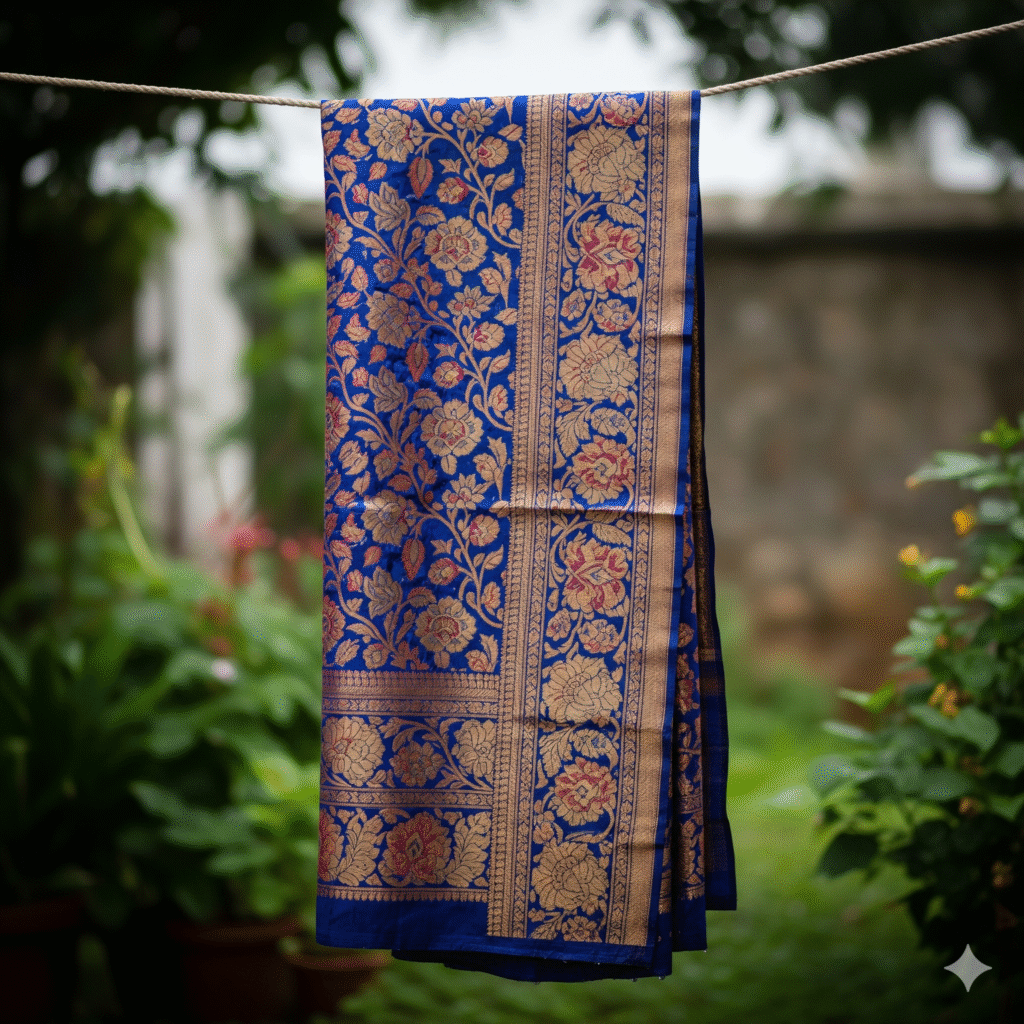
- Spread the saree on a clean white towel.
- Roll the towel to absorb excess water.
- Dry in shade (never under direct sunlight).
- Hang on a padded hanger to prevent stretching.
Do’s and Don’ts While Washing Silk Saree at Home
Do’s
- Use cold water and mild detergent.
- Wash silk saree separately to prevent color transfer.
- Dry in shade to preserve fabric and color.
- Store sarees in cotton or muslin cloth after washing.
Don’ts
- Never use harsh detergents or bleach.
- Avoid machine wash unless it has a “silk” setting.
- Do not wring or brush the saree.
- Never expose silk to direct sunlight for drying.
Different Types of Silk Sarees and Their Washing Methods
Every silk saree is unique, and washing methods may slightly differ:
1. Kanjeevaram Silk Saree
- Always dry clean if new.
- After a few wears, you can hand wash using mild shampoo.
- Store in a muslin bag to prevent damage.
2. Banarasi Silk Saree
- Extremely delicate—prefer dry cleaning.
- If washing at home, use cold water only.
- Never soak for more than 3 minutes.
3. Tussar Silk Saree
- Can be hand washed with soft detergent.
- Avoid scrubbing as the fabric is rough-textured.
4. Art Silk Saree
- Can be washed easily at home.
- Mild detergent and normal water are safe.
5. Georgette & Chiffon Silk Sarees
- Use lukewarm water with gentle detergent.
- Avoid twisting while drying.
How to Remove Stains from Silk Saree at Home
Stains can ruin the beauty of your silk saree. Here’s how to handle them:
- Oil stains – Sprinkle talcum powder, leave for a few hours, and brush off.
- Food stains – Dab with cold water and mild shampoo.
- Ink stains – Use cotton dipped in alcohol-based hand sanitizer (test on small area first).
- Sweat stains – Rinse with cold water and vinegar solution.
Always treat stains immediately to prevent permanent marks.
How Often Should You Wash Silk Sarees?
Unlike cotton sarees, silk does not need frequent washing.
- Wash only after 2–3 wears.
- For occasional sarees, air them out after wearing instead of frequent washing.
- Store properly to avoid dust and odor.
Storage Tips After Washing Silk Sarees
Washing is only one part of silk saree care. Storing it right ensures longevity.
- Fold sarees carefully and store in a muslin or cotton cloth.
- Refold every 3–4 months to prevent permanent creases.
- Keep sarees away from naphthalene balls (they damage silk). Use neem leaves or silica gel instead.
- Avoid hanging heavy silk sarees for long periods.
Machine Wash vs Hand Wash: Which is Better?
- Hand Wash – Best for delicate silk sarees, maintains shine, and reduces damage risk.
- Machine Wash – Only possible if your machine has a “silk/delicate” setting. Always use a laundry bag.
Recommendation: Stick to hand washing for expensive pure silk sarees.
Expert Tips to Maintain Silk Sarees at Home
- Iron on low heat with saree inside out.
- Do not spray perfume directly on silk.
- Avoid wearing heavy jewelry that may snag the threads.
- Air out sarees occasionally to keep them fresh.
- Rotate your silk sarees—don’t keep them folded for years.
Frequently Asked Questions (FAQs)
1. Can I wash pure silk saree at home?
Yes, you can, but only with mild detergent, cold water, and gentle handling.
2. How to wash silk saree with zari?
Avoid washing zari directly. Wrap zari portions in muslin cloth while soaking.
3. Can I use shampoo to wash silk saree?
Yes, baby shampoo or mild hair shampoo works as a safe alternative to detergents.
4. Will silk saree lose its shine after washing?
Not if washed correctly. Use vinegar rinse for restoring natural shine.
5. Should I iron silk saree after washing?
Yes, but always iron inside out on low heat to prevent fabric burn.
Conclusion
Silk sarees are elegant, luxurious, and deeply rooted in Indian culture. Taking proper care ensures that they remain beautiful for years. By following these step-by-step methods to wash silk saree at home, you can keep your sarees clean, shiny, and long-lasting—without spending heavily on dry cleaning.
Remember the golden rule: gentle wash, cold water, mild detergent, and careful drying. With these simple tips, your silk sarees will continue to look stunning every time you drape them.